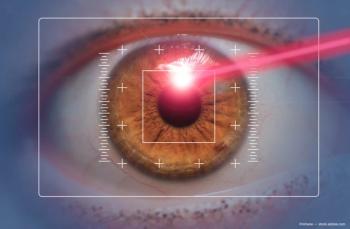
Predictive power of spatial frequency doubling drops over time
Spatial frequency doubling (FD) stimuli have an excellent abilityto predict progression of visual field loss and optic discabnormalities in patients with glaucoma for about 3 years, but thepredictive power drops off over time, said Ted Maddess, PhD, seniorfellow (associate professor) in the visual sciences group, ResearchSchool of Biological Sciences, Australian National University,Canberra.
Spatial frequency doubling (FD) stimuli have an excellent ability to predict progression of visual field loss and optic disc abnormalities in patients with glaucoma for about 3 years, but the predictive power drops off over time, said Ted Maddess, PhD, senior fellow (associate professor) in the visual sciences group, Research School of Biological Sciences, Australian National University, Canberra.
Dr. Maddess reported 12-year follow-up data on 218 subjects from a group of 330 first assessed in 1991-1992. Based on the results of the initial tests, patients with glaucoma or suspected glaucoma were classified as weak, moderate, or strong. The initial study determined contrast thresholds for several FD stimuli in up to 7 quarterly visits. Over the years, patients were followed for changes in visual field as measured by the Humphrey Field Analyzer (HFA) and optic disc appearance.
Overall, FD performed slightly better than HFA for the first few years in predicting progression in any hemifield.
"With either one of these methods, you can predict with about 80% accuracy or better who is going to progress, which may be important in the clinic in determining who to treat more aggressively," Dr. Maddess said.
However, FD performed poorly at predicting progression in the hemifield where the threshold was measured. The data suggest that it is possible to predict progression, but not to predict accurately where it will occur.
"Neither method was very good except for the first few years," Dr. Maddess said. He added that a more important implication from the study might involve the nature of the disease.
"Maybe glaucoma is not strictly a progressive disease, but is really more episodic or stochastic such that progression in a particular retinal area is triggered by other influences - hence it's not predictable from baseline conditions," Dr. Maddess suggested.
Newsletter
Don’t miss out—get Ophthalmology Times updates on the latest clinical advancements and expert interviews, straight to your inbox.
















































.png)


